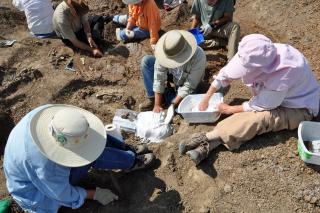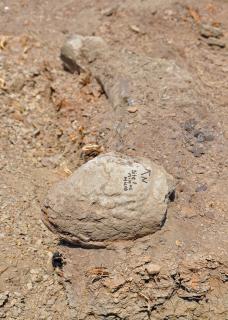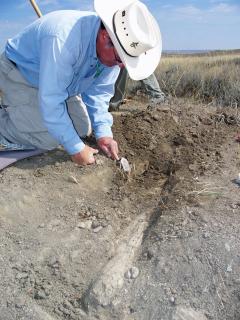National Fossil Day – Celebrating the history right under our feet
WASHINGTON — Beneath our feet, in the various strata of the earth, fossils represent the long and fascinating history of life on our planet.
Fossils only form under specific conditions. All biological materials decompose—soft tissues, feathers, even bones and teeth. Some take longer than others, and depending on conditions, they can last a lot longer. When the conditions are right, mineralization can occur which offsets decomposition and produces a fossil and a glimpse into our planet’s history.
National Fossil Day has been celebrated since 2010 with a mission to recognize the incredible scientific and educational resources that lie under our feet. Spearheaded by the National Park Service, the Forest Service, and other federal, state, and local government agencies along with private and nonprofit organizations celebrate National Fossil Day to recognize what fossils mean to us. It’s also a day to recognize the passion and expertise that paleontologists, volunteer naturalists, and others bring in their search for and study of fossils.
In addition to participating in National Fossil Day events with our fellow agencies, the Forest Service distinguishes itself as a leader in its own way.
The Forest Service has sponsored Passport in Time for 26 years. This volunteer cultural heritage resources program has connects cultural resources specialists, paleontologists, historians, and volunteers to a host of projects on public lands across the country. These events include archaeological surveys, fossil excavations, art restoration, research, and curation. It is a chance for volunteers to work under the guidance of, and alongside, archaeologists, paleontologists, historians, and more.
Passport in Time has grown to include work on 117 national forests across 36 states. During the course of paleontology-focused Passport in Time and other volunteer-based projects, volunteers have helped to unearth Triceratops fossils in the Thunder Basin National Grassland in Wyoming, discovered a tooth from a Tyrannosaurus rex on the Custer National Forest in South Dakota and unearthed dinosaur tracks, marine reptiles, and fossil fish from the Comanche National Grassland in Colorado.
On Oct. 10, one of our Forest Service paleontologists Barb Beasley, will be giving a presentation on paleontological resources on our national forests and grasslands at the Sidney Yates Building in Washington, D.C. from noon to 1 p.m. This will be followed by a National Fossil Day event on October 11 from 10 a.m. to 2 p.m. across from the Smithsonian castle on the National Mall. Forest Service employees will be displaying and explaining fossils, sharing information on paleontology on national forests and grasslands, and promoting the Passport in Time volunteer opportunities.






